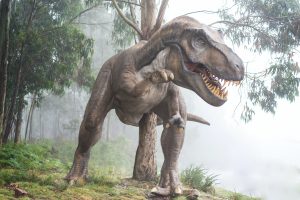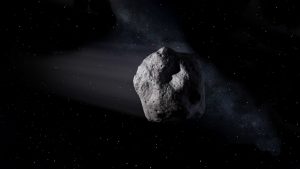Chilean palaeontologists presented their observations about a dinosaur found three years ago in Patagonia with a highly unusual tail that has perplexed researchers on Wednesday.
The remains of the Stegouros elengassen were unearthed during excavations in 2018 at Cerro Guido, a site known for containing numerous fossils, by a team that initially thought they were dealing with an already-known dinosaur species until they analysed its tail.
Also Read | Fans swoon over details in 5-min prologue to Jurassic World Dominion: Watch
“That was the main surprise,” said Alexander Vargas, one of the paleontologists. “This structure is absolutely amazing.”
“The tail was covered with seven pairs of osteoderms … producing a weapon absolutely different from anything we know in any dinosaur,” added the researcher during a presentation of the discovery at the University of Chile.
The osteoderms, which are bony plaque structures found in the skin’s dermal layers, were positioned on either side of the tail, giving it the appearance of a large fern.
Also Read | UN’s new speaker is a dinosaur. He knows ‘a thing or two about extinction’
Paleontologists have found 80% of the dinosaur’s skeleton, putting its age between 71 and 74.9 million years ago. It was nearly seven feet long, weighed 150 kgs (330 pounds), and was a herbivore.
The animal could represent a previously unknown lineage of armoured dinosaurs never seen in the southern hemisphere but already recognised in the northern part of the continent, according to the scientists, who published their findings in the journal Nature.
“We don’t know why (the tail) evolved. We do know that within armored dinosaur groups there seems to be a tendency to independently develop different osteoderm-based defense mechanisms,” said Sergio Soto, another member of the team.
The Cerro Guido area, in the Las Chinas valley 3,000 km (1,800 miles) south of Santiago, stretches for 15 kilometers. Various rock outcrops contain numerous fossils.
The finds there allowed the scientists to surmise that present-day America and Antarctica were close to each other millions of years ago. “There is strong evidence that there is a biogeographic link with other parts of the planet, in this case Antarctica and Australia, because we have two armored dinosaurs there closely related” to the Stegouros, said Soto.



